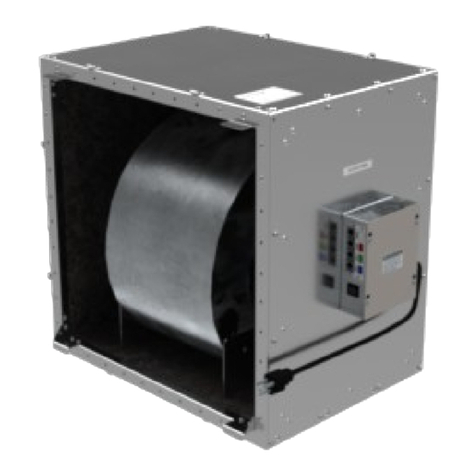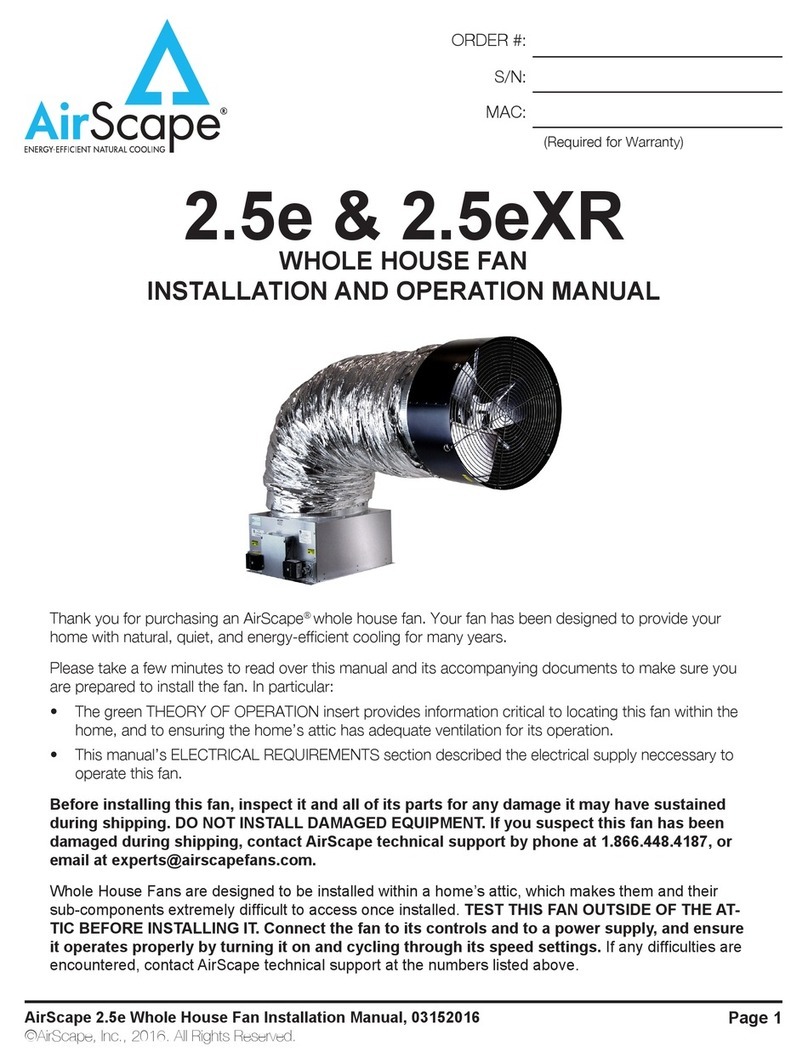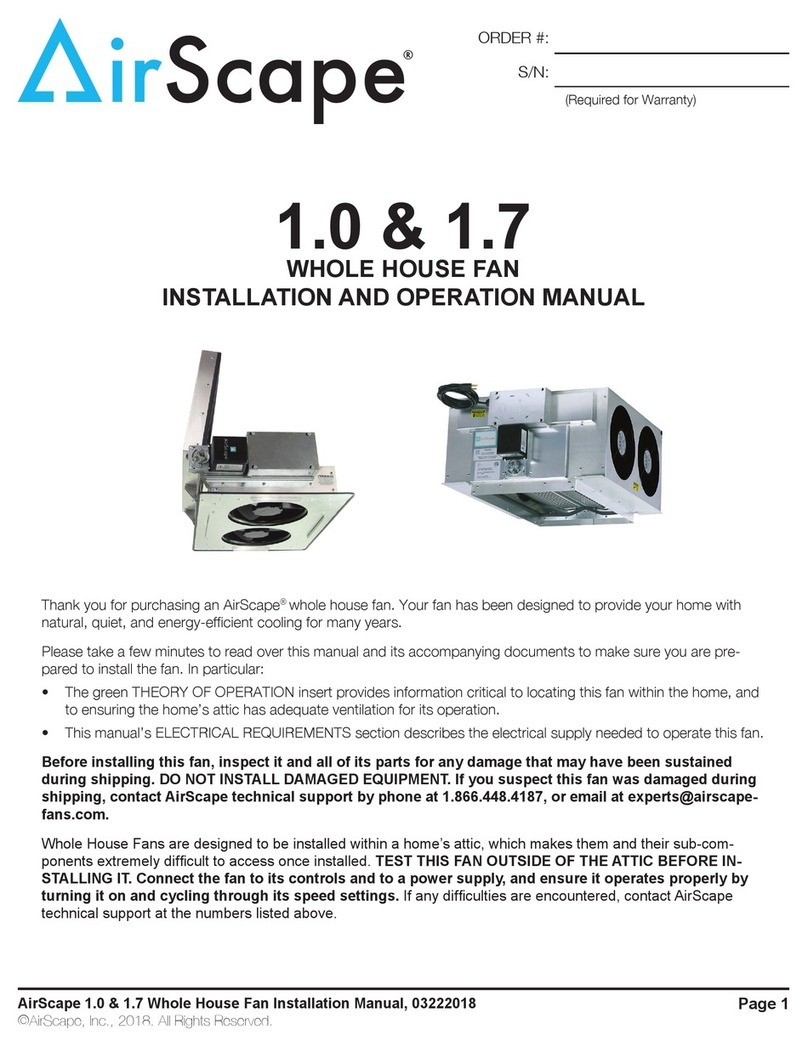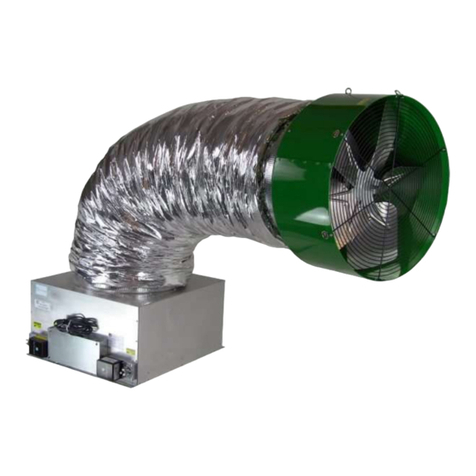Venting requirements vary by fan. We recommend
a minimum
of 1 square feet of “net free” ventilation area per
500 cfm at a fan’s highest speed. The minimum attic venting requirements for each model of AirScape® and
Ventura® whole house fan is given in the chart at above.
Net free ventilation area can be provided by any combination of gable, eyebrow, roof cap, soffit, or ridge vents, or
any other method of ventilating the attic space.
However, the openings of most vents are partially obstructed by grilles, louvers, and/or screens. A vent’s “net
free” ventilation area is then the surface area of its opening minus the surface area of any grilles, louvers, or
screening covering it. ifferent types of vents have different ratios of net free area to total area.
Manufacturers typically publish their vents’ net free ventilation areas and/or ratios in their products’ specification
documents. If this information is unavailable, a ratio of 50% net free area to total area is usually a good rule of
thumb. The most notable exception to this rule of thumb are ridge vents. The industry standard net free ventilation
area for ridge vents is 13% of the vent’s length in feet. Thus, a ten foot ridge vent would provide 1.3 sq. ft. of net
free ventilation area.
While in our experience most properly constructed homes have adequately ventilated attics, not all do. Because
sufficient ventilation is so critical to this fan’s performance, it is important that the home’s existing ventilation be
verified before it is installed.
Since most attics have multiple vents, often of different types, it is necessary to count each vent, noting its type
and size. Apply the appropriate ratio to the dimensions of each vent to find its net free area, and sum these values
to find the attic’s total ventilation. An example of how these calculations are made is given in the chart below.
Vent Type imensions Total Area Net Free Area
Ratio (“NFA”)
Net Free Ventilation Area
(=Total Area x NFA)
Louver 24" × 24" 24" × 24" ÷ 144* = 4 ft250% 4 ft2 × .50 = 2 ft2
Ridge 10 feet n/a 13% 10 feet × .13 = 1.33 ft2
Round Soffit 10" diameter 3.14 × 5" × 5" ÷ 144* = 0.55 ft250% .55 ft2 × .50 = .28 ft2
* ÷ 144 = to convert inches into feet Total Net Free Ventilation Area: 3.6 ft2
SAFETY INFORMATION
Some of the principles of this product’s safe installation and operation
are not immediately obvious. Read the following safety information
before continuing further:
• Never
operate this fan without a Window or oor opened.
• This fan is meant for general ventilation.
It has NOT been designed to ventilate particle laden and / or explosive mixtures of air.
• This fan is not for use in kitchens.
• Never
force open the damper door(s), this could severely damage the actuator.
Always
depress the
actuator’s yellow clutch release before manually opening or closing the damper door(s).
• Before installing or servicing this fan, switch power off at the home’s electrical panel or unplug the fan in the
attic, to reduce the risk of damaging circuit boards, fire, electrical shock, or injury.
AirScape 3200 Ventura Whole House Fan Installation and Operation Manual, 05052021
©AirScape, Inc., 2020. All Rights Reser ed. Page 3








































